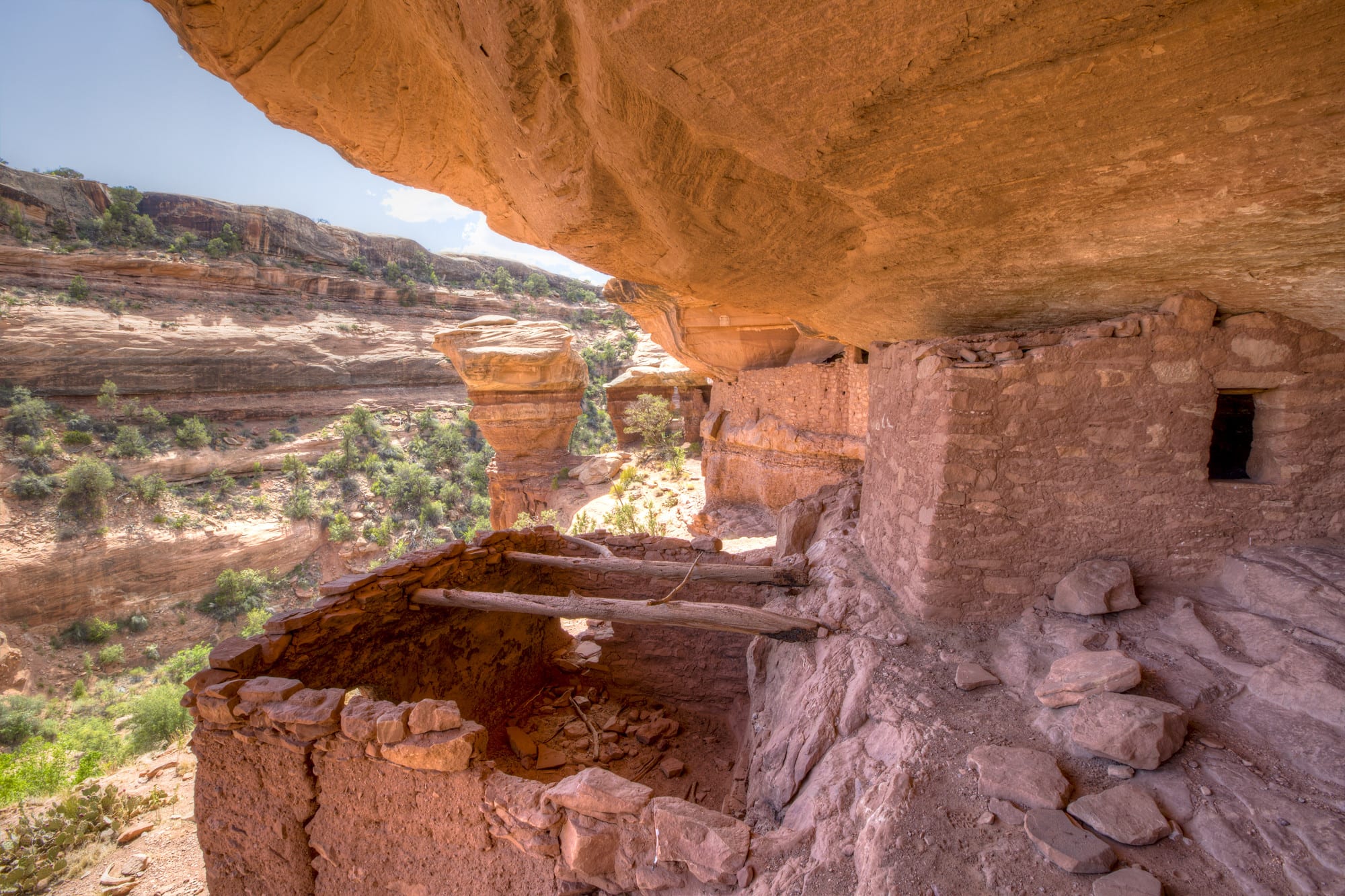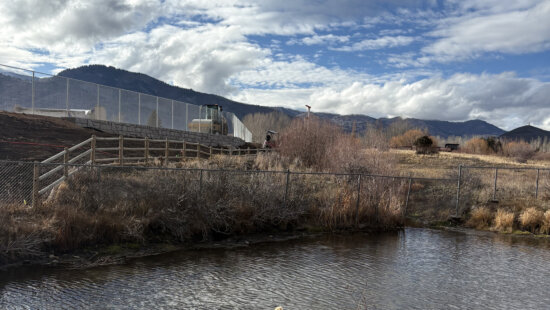Environment
Calls to shut down the country’s only uranium mill come to Salt Lake City
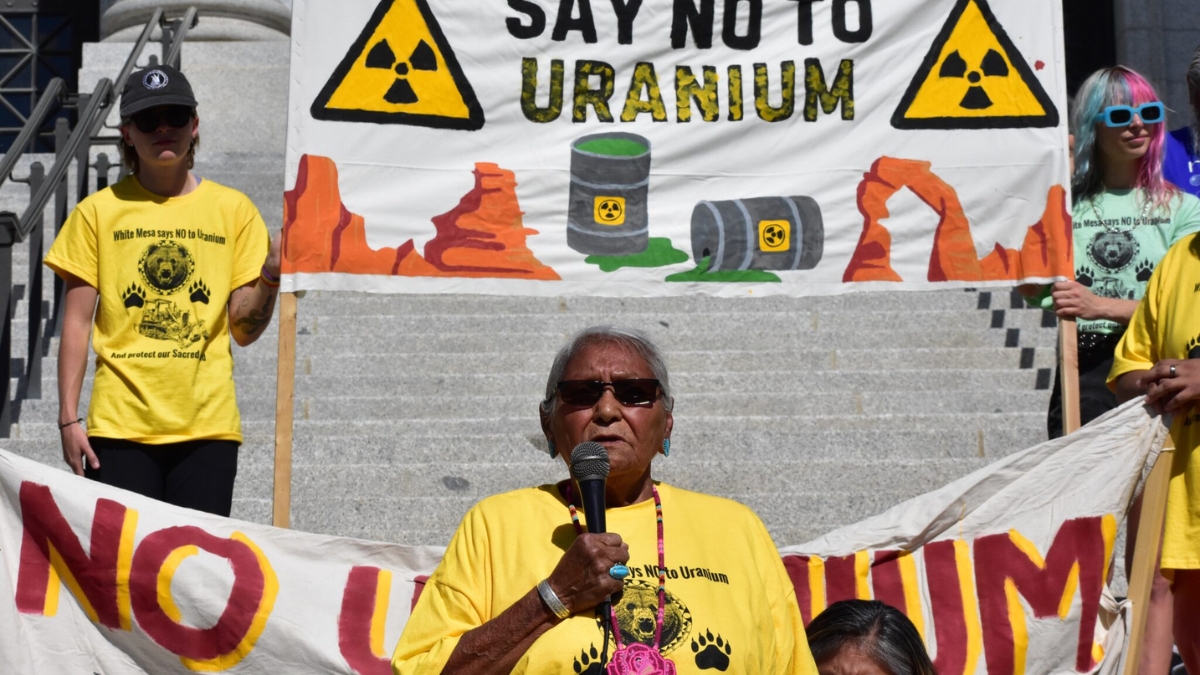
Thelma Whiskers of the Ute Mountain Ute tribe speaks in opposition of the White Mesa Uranium Mill during a protest outside the Utah Capitol Building in Salt Lake City on Friday, Oct. 4, 2024. Photo: Kyle Dunphey // Utah News Dispatch
UTAH — With domestic uranium production making a comeback, so are calls to shut down the country’s only operating uranium mill, located in White Mesa, a small tribal community along the southern Utah-Colorado border.
On Friday, those calls rang loud from Salt Lake City as members of the Ute Mountain Ute tribe gathered in protest on the steps of the Utah Capitol.
“I want my community to have good air quality, good water resources,” said Yolanda Badback, a White Mesa resident. “We live there and that’s our homeland. And I will never leave my homeland for anything.”
The White Mesa Uranium Mill is now the country’s only operating uranium mill, located about 85 miles south of Moab between the Ute Mountain Ute Reservation and Bears Ears National Monument. Operated by Energy Fuels Resources, one of the country’s largest uranium producers, the mill for years has been used as a radioactive recycling center, taking in waste from across the U.S. and the world.
Now, with renewed interest in domestic uranium production for nuclear energy, Energy Fuels has resumed mining, although tensions between the company and the Navajo Nation have hindered the transportation of uranium ore through the reservation in Arizona. Like the Ute Mountain Ute, the Navajo government has concerns over the health and safety impacts of the uranium industry.
Energy Fuels says the mill operates “to the highest standards in the world,” producing uranium, rare earth elements and other critical minerals “that are crucial to the transition to clean, carbon-free energy,” according to a statement to Utah News Dispatch.
“There is no evidence that points to the Mill causing any adverse health or environmental impacts. It is disheartening to see opposition to the Mill and our recycling programs that is based on myths, outdated beliefs and outright falsehoods, which activist organizations use to create unfounded fear in the community,” the company said in a statement.
The company pointed to a 2023 U.S. Centers for Disease Control and Prevention report, which found that children and adults who breathe the air and drink water from the tribe’s public water system “are unlikely to be harmed from radiological contaminants.” The report recommends further monitoring and testing, which the company said its permit requires it to do.
Curtis Moore, a spokesman for Energy Fuels, said the company has around 100 monitors around the site for air, radon and groundwater.
The report does leave some questions unanswered, clarifying that the department cannot determine whether radon emissions are impacting bordering properties, soil and vegetation, or if nearby seeps and springs pose a radiation hazard, because it doesn’t have sampling data to analyze. It recommends the tribe collect water, soil and radon samples.
And neither a CDC report, or assurances from Energy Fuels, are enough to quell the skepticism of people living in White Mesa who rallied outside the capitol on Friday.
Decades of a horribly underregulated uranium industry in the Four Corners area left many Ute Mountain Ute and Navajo people with abnormally high rates of cancer. Amid a Cold War push to boost domestic uranium production, the federal government concealed some of the dangers of radiation, failing to provide workers with the proper protective equipment. To this day, it’s hard to find someone on either reservation that hasn’t had at least one friend or relative with cancer.
Energy Fuels calls that history a “disgrace,” and acknowledges that the fallout persists today.
“However, today’s industry is far different and bears little resemblance to the industry of 50-plus years ago,” the company said.
Independent reports have detected contaminants in aquifers around the White Mesa area, although it’s difficult to trace anything back to the mill.
As Malcolm Lehi puts it, “it’s their professionals versus our professionals.”
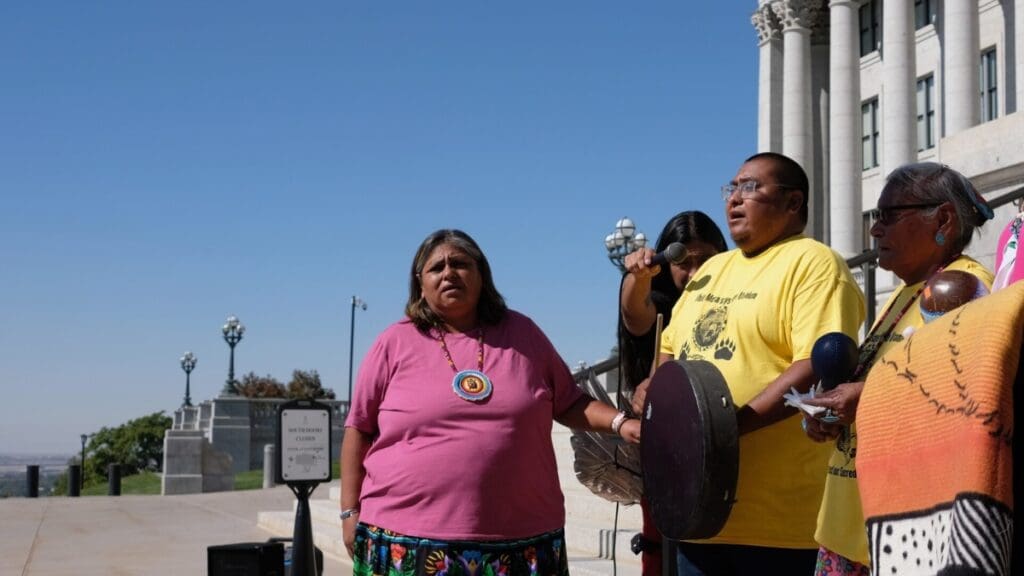
Lehi, a member of the Ute Mountain Ute Tribal Council, said nearly everyone in White Mesa has a family member who has or had cancer. Most people in his community buy bottled water, out of fear the tribe’s public water system is contaminated. When the wind blows off the nearby Abajo Mountains, an unsettling smell blankets the region, which he says stems from the mill.
Everywhere they take their concerns, Lehi said, “we fall on deaf ears.”
“We’ve gone to D.C., we’ve gone to regional, we’ve gone to the state, the Bureau of Indian Affairs, the EPA, the Department of Energy,” said Lehi.
The tribe holds an annual walk in White Mesa, where tribal members and environmental activists protest outside of the uranium mill. Friday, however, was the first time members of the Ute Mountain Ute tribe rallied outside the statehouse.
Braving what ended up being record heat — the National Weather Service said it was Salt Lake City’s first 90 degree day in October on record — around 20 members of the Ute Mountain Ute walked out of the Capitol building after meeting with several of the state’s regulatory bodies, including the Department of Environmental Quality and Department of Transportation.
Wearing shirts that read “White Mesa says NO to Uranium,” speakers called for the mill’s closure. That includes Badback, who grew up in White Mesa and has been protesting the mill for at least 15 years, after she “started to notice a lot of health issues in the community.”
“My goal is to close it or to shut it down completely. Our community is a small community … and I want clean air for our community,” said Badback, who helps organize the walk taking place in White Mesa next Saturday, Oct. 12.
Michael Badback, also a White Mesa resident, said the mill’s presence makes him worried for the tribe’s younger generation.
“It’s hard to see them growing up next to the mill, and our elderly who have passed on and had health problems. No one ever tested them,” he said. “We’ve fought this monster for a long time. Now it’s time to lay it to rest and move it somewhere else.”
The Ute Mountain Ute are a small tribe located along the southern Utah-Colorado border. Headquartered in Towaoc, Colorado, the tribe has a little over 2,000 members, according to its government website. White Mesa, according to the latest Census, is home to about 270 people.
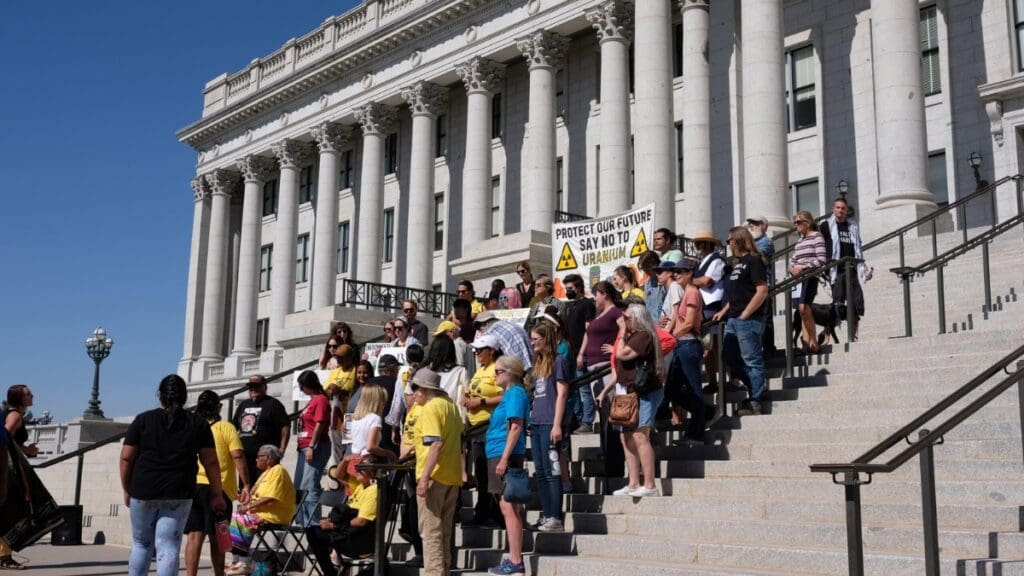
Scott Clow, environmental programs director for the tribe, pointed to a recent resolution passed in 2021 calling for the mill’s operations to cease and demanding an end to the transportation of uranium across the reservation. He said the tribe has yet to organize something as drastic as a roadblock, “but let me tell you, it could be coming soon.”
The tribe, Clow said, does not support nuclear energy as a way to reduce carbon emissions.
“We understand that you can generate electricity without a lot of carbon pollution once you have fuel rods in place. But getting them there is a poisonous, disastrous process, where people like the people of White Mesa and all the people who have died around this region, extracting and milling and transporting uranium, have suffered. So we are embracing renewable energy. We’re not embracing nuclear power,” he said during the rally Friday.
















